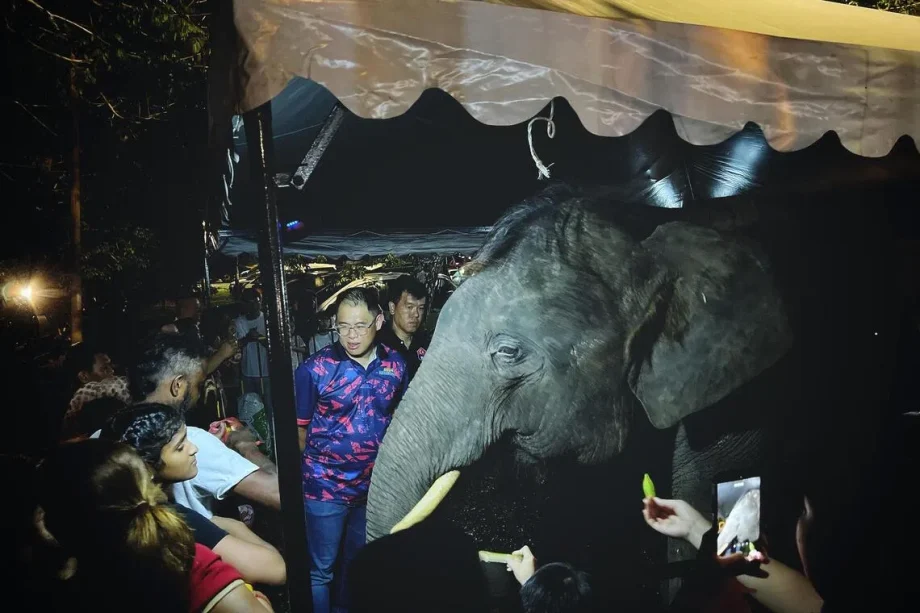YONG PENG, Johor – On TikTok, Mr Slamet Saket’s drone videos of elephants grazing on fruit trees at plantation fields in Kota Tinggi, Johor, may look like a panoramic shot straight out of a wildlife documentary.
But the drone recording is actually part of a safety measure for the Indonesian migrant plantation worker. Before he enters his 1.6ha worksite each time, he would scan the area for wild elephants.
The 37-year-old from Central Java, who has been working in plantations in Johor since 2014, told The Straits Times that incidents of human-elephant conflict at his worksite have become more regular over the past three years.
“It’s common to see juvenile elephants resting or grazing here two to three times a week, and whole herds during harvest season,” said Mr Slamet, who takes care of rambutan and banana crops. Damage by just one elephant can cause major losses for small-farm owners, or smallholders, in Malaysia.
“There have been countless times I was chased by wild elephants when I encountered them at work, so the drone helps me find a way around them.”
Mr Slamet’s experience reflects a worrying trend in Malaysia’s southernmost state, where developments are ramping up and consequently encroach on nature. As a result, reports of human-elephant conflicts have surged from 103 cases in 2020 to 253 in 2024 – causing millions of ringgit in losses.
Among the worst-affected areas are the district of Kluang, about 100km north of Johor Bahru, and Kota Tinggi, home of the popular tourist destination Desaru.
In May, then Minister of Natural Resources and Environmental Sustainability Nik Nazmi Nik Ahmad said the wildlife department, Perhilitan, received 4,919 complaints regarding elephants between 2020 and 2024, involving property losses of RM39.4 million (S$12 million) in Malaysia.
Mr Nik Nazmi said a 2016 study found that elephant habitats had shrunk by 68 per cent because of agricultural expansion, settlements and infrastructure development.

Johor state executive council member Ling Tian Soon vows to mitigate human-elephant conflicts.
PHOTO: AH SOON/FACEBOOK
When ST met Johor’s top official for health and environment, Mr Ling Tian Soon, at an elephant awareness programme in Yong Peng on Sept 26, he said Kluang is the district worst-hit by issues involving elephants in the state.
The land-locked district sits within a massive forest spine bordered by the 48.9ha Endau-Rompin National Park to the north and several recreational forests to the south, stretching all the way to the Gunung Panti forest reserve in Kota Tinggi.
Data from the Global Forest Watch website
lists Kluang as the district in Johor that recorded the most tree cover loss at 163,000ha between 2001 and 2024, followed by Kota Tinggi (161,000ha). Each of these areas is roughly 300 times the size of Sentosa Island in Singapore.







